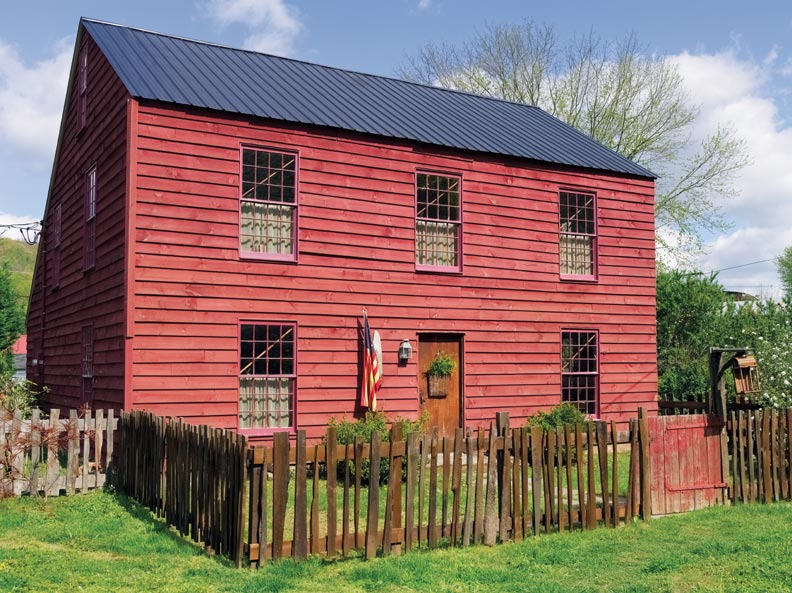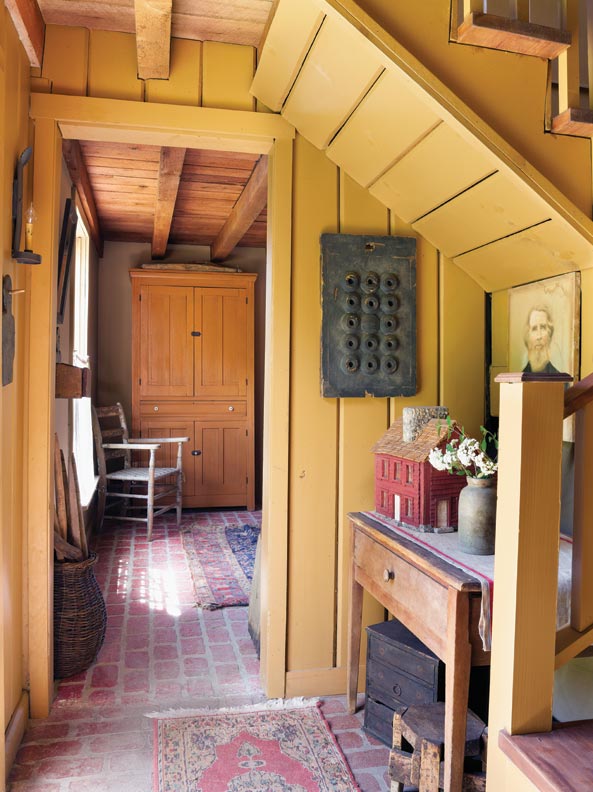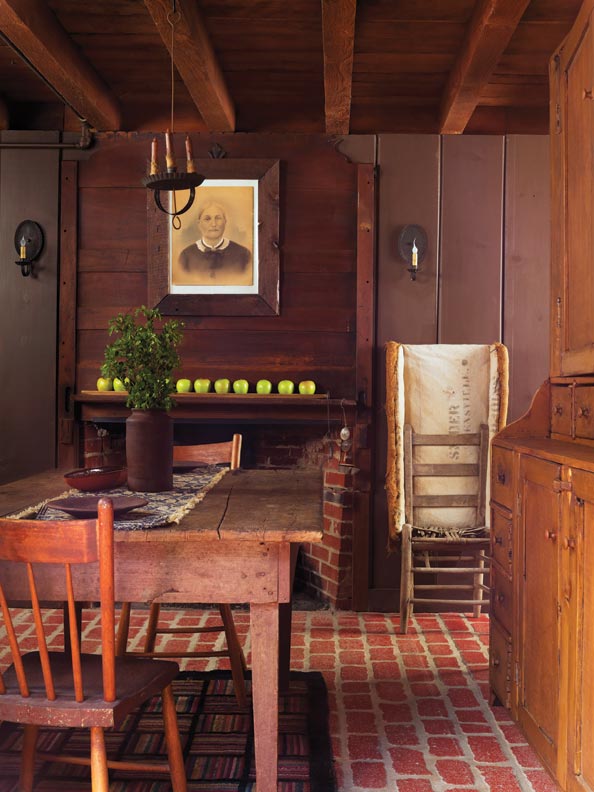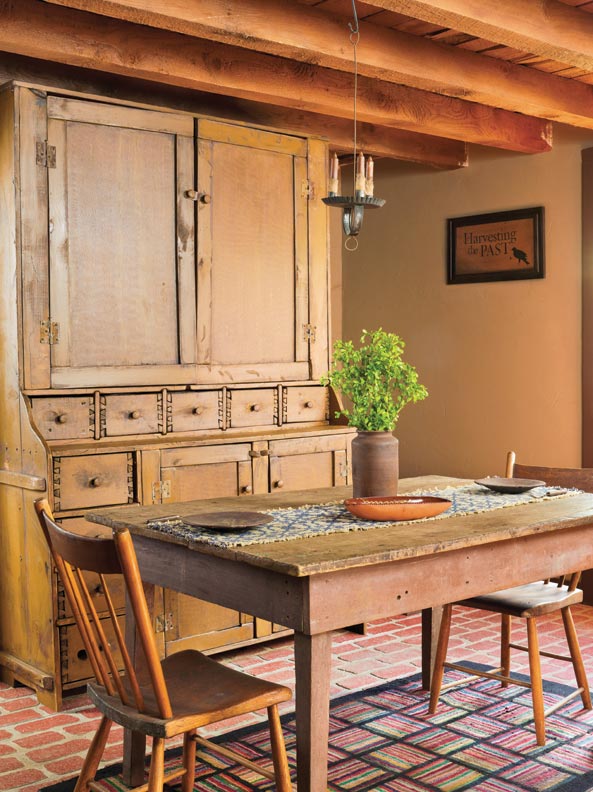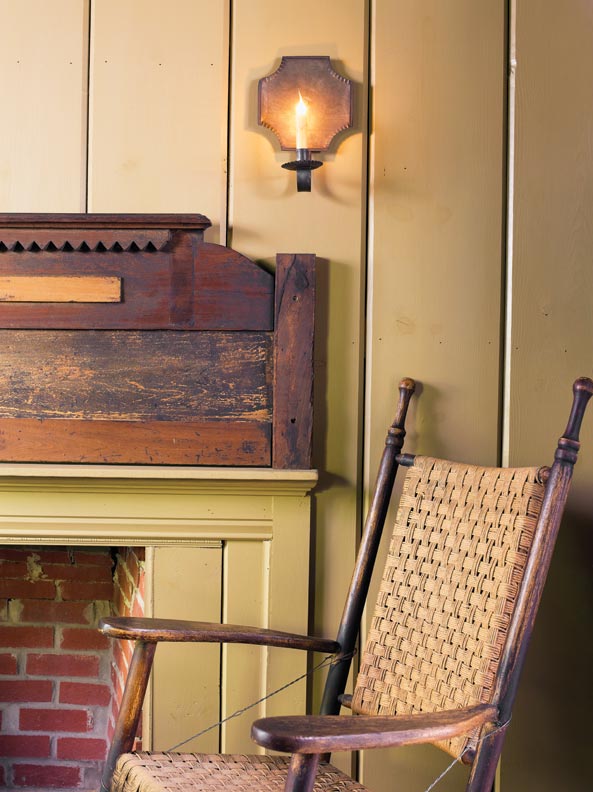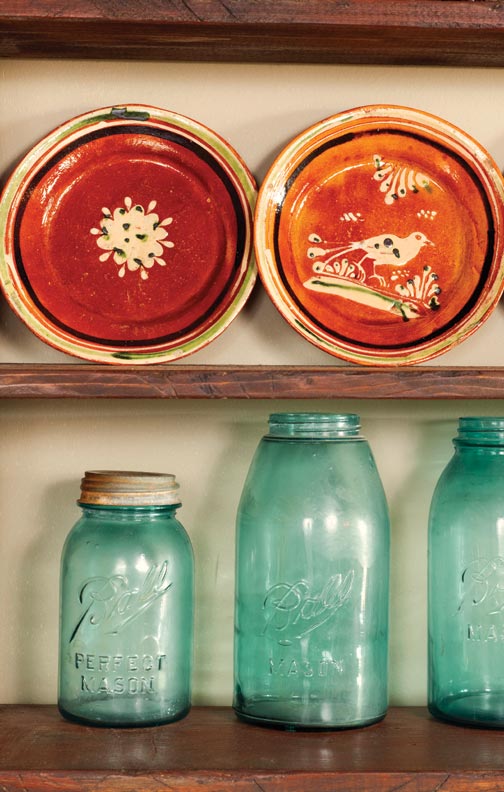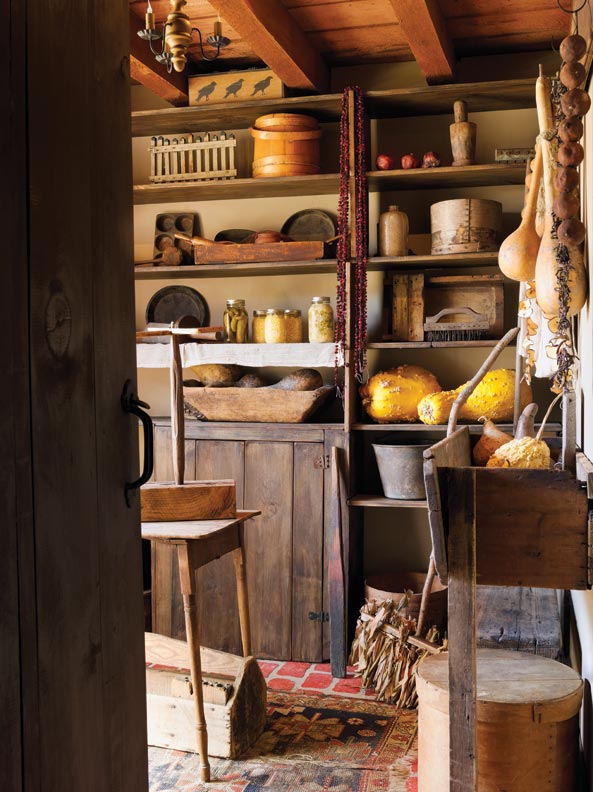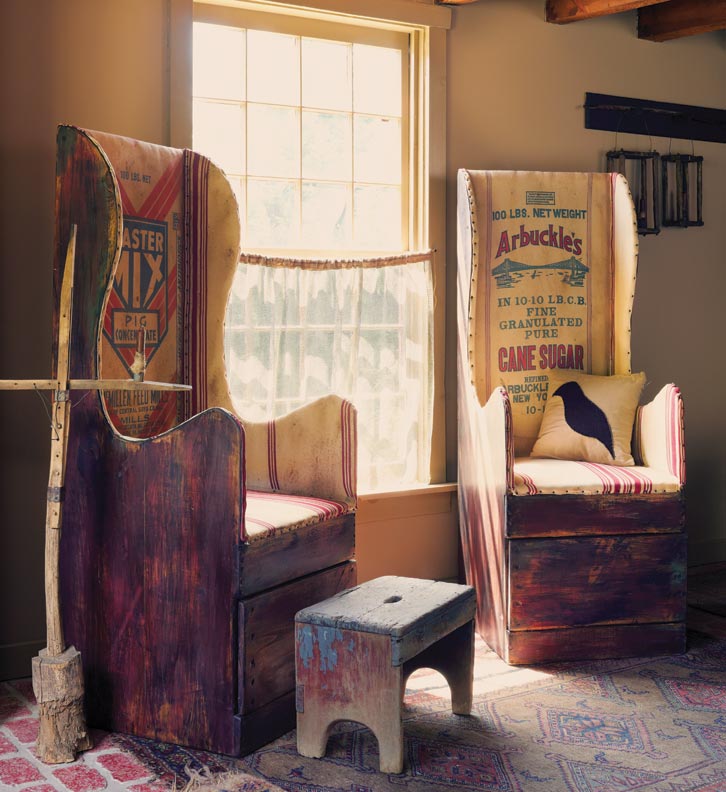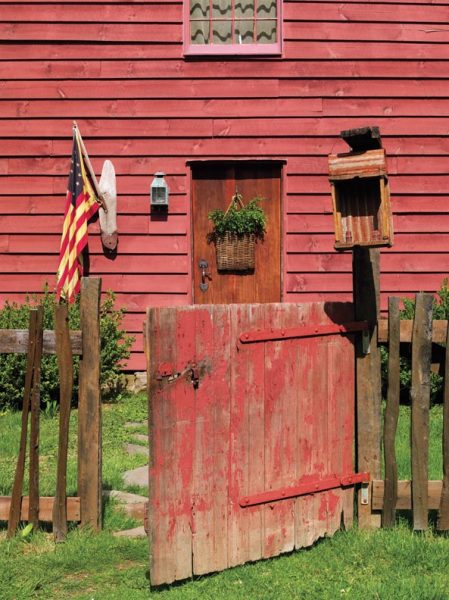
The Saltbox house was built by the homeowner and his father between 2009 and 2011.
Gridley + Graves
Only the snug simplicity of an 18th-century house would do, though Mike Spangler appreciates grander architecture of all periods. “I always wanted to live in a Saltbox,” he says—so, with his father, he built one from scratch. The house is in West Virginia, not far from Ohio in a region with its share of New England-derived houses.
It has a simple center-chimney plan. The keeping room (today’s living room) is to the left, the front room (today’s dining room) to the right, with the kitchen, buttery (storage), and a half-bath across the back. The main stair doglegs at the center of the house; a back stair leads up from the kitchen. Three bedrooms and two full baths create a comfortable second story.
The duo started with house plans bought years ago through Country Living magazine. “My father, being a builder, was able to modify the floor plan,” Mike says. Based on New England originals, they took the 30′ x 30′ plan to a more pleasing 32′ x 32′, and added a half-bath on the first floor.
Though it’s a modern home, the place looks old, inside and out, and even “feels” like an early house. Three fireplaces add to the ambiance, but they are gas-burning. The kitchen island looks like it came out of a general store, but it’s new, with a massive countertop made from poured concrete edged with wormy chestnut and waxed. The pantry is built like an old-fashioned buttery, for storing bulk foodstuffs on open shelves, but it incorporates a laundry room. The “brick” floor is actually cement poured in a mold and stained—a money-saving measure. Lighting fixtures are authentic reproductions, lit with low-wattage bulbs to mimic candlelight.
Despite such concessions to comfort, the overall sensibility is of a very old house. For walls in the hall, stairwell, and around fireplaces, Mike used traditional 1′ x 12′ pine boards, which he hand-sanded. He used a plane to feather the edges. “You can’t replicate hand finishing with machines,” he says. Step-back shelving in the dining room looks antique, though it was built with new lumber. The painstaking layered finish includes milk paint. Shelves display traditional new redware made by artisans in West Virginia, Virginia, Pennsylvania, and Ohio—with a few cherished pieces by Shooner (Ohio).
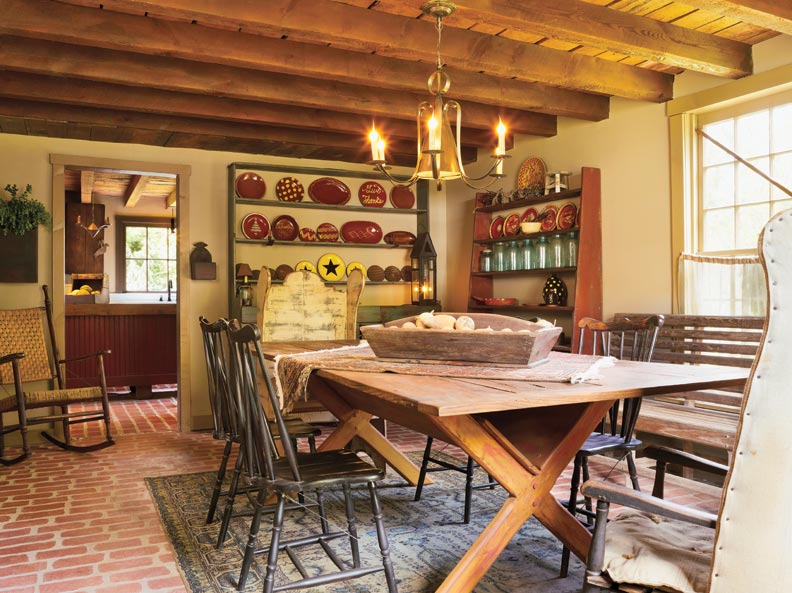
Reproduction redware is displayed on canted shelving in the dining room; the kitchen is visible through the doorway.
Gridley + Graves
Antiques collected in West Virginia, Ohio, and New England date from the late 1700s and through the 19th century, giving the interior a layered history. The rugs are all antique or vintage. Many pieces in the house are Spangler’s own reproductions and “make do” furniture—chairs covered in feedbags, salvaged bits repurposed.
“Make-do furniture refers to necessary pieces made from whatever is on hand: making do with what you have to create what you need,” Mike explains. The practice is old, and the furniture created has instant patina. “The furniture comes from my imagination; I’ve built too many pieces to list,” he says. “All of the chairs were made by me, using old feed sacks, old quilts and linens, and so on.”
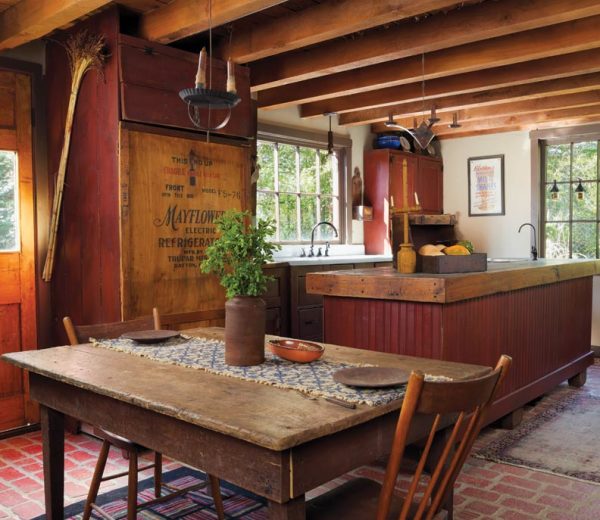
The straightforward kitchen functions well while downplaying modern intrusions. The concrete and chestnut island has the presence of an old store fixture.
Gridley + Graves
This furniture-making and tinkering with salvage led to a business, Mike Spangler Folkart. Mike sells antiques as well as primitive reproductions and “smalls” or collectibles, which he crafts. “It’s a side business now, but it’s growing,” he explains. “Everything I build is a one of a kind; nothing is ever duplicated or reproduced exactly. I build and sell only my own copyrighted pieces.” Spangler travels to primitive-furniture and crafts shows during the year, “and you can always find me at Simple Goods in Ohio and Autumn on the Farm in Kentucky.”
But it all started with building the Saltbox. The house is a cherished reminder of the time spent working together with his father, Mike Sr., who is a retired builder. “Everywhere I look, I see my father’s handiwork, and that’s deeply important to me,” Mike says.



